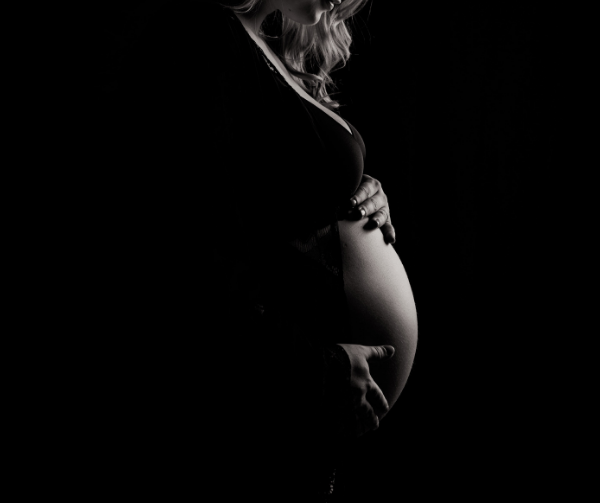One of the more challenging aspects of pregnancy for many women is morning sickness. The nausea, dry heaving, actual vomiting, never vomiting but always feeling as though you need to…it is rough. Fortunately for most, morning sickness is short lived and subsides somewhere in the second trimester.
Some of us, however, don’t get a reprieve.
Hyperemesis Gravidarum (HG) is severe morning sickness that can cause intense nausea, vomiting, dehydration, weight loss, and even result in hospitalization during pregnancy. Around 2% of pregnant women will experience HG, so it is somewhat rare. The condition has gained awareness recently with some famous figures speaking about their symptoms (most notably the Duchess of Cambridge, Kate Middleton).
I suffered from HG with all three of my pregnancies. About half of all women who are diagnosed with it during their first pregnancy will also have it during their following pregnancies. For my first two pregnancies, my doctor tried all kinds of medicines, nausea bands, and frequent check-ins, yet I still ended up in the hospital with weight loss and severe dehydration. It is tough to make yourself eat and drink anything when you know it will just come back up. During these pregnancies, I was working and it made my professional life really tough. Most people don’t understand the difference between morning sickness and hyperemesis gravidarum.
| Morning Sickness: | Hyperemesis Gravidarum: |
| Nausea sometimes accompanied by vomiting | Nausea accompanied by severe vomiting |
| Nausea that subsides at 12 weeks or soon after | Nausea that does not subside |
| Vomiting that does not cause severe dehydration | Vomiting that causes severe dehydration |
| Vomiting that allows you to keep some food down | Vomiting that does not allow you to keep any food down |
For my third pregnancy, I was as proactive as I could possibly be. I got all the anti-nausea prescriptions ready before I was six weeks pregnant (for me, the morning sickness kicks in at exactly six weeks). I rested more, ate more, and made a focus of staying hydrated. I bought the darn ginger candy. And yet…it started right at six weeks, just like the previous pregnancies. By eight weeks pregnant my health was really suffering. I lost twenty pounds in ten days. That is not an exaggeration, it was my worst weight loss yet. I managed to avoid hospitalization with that pregnancy, mostly because my husband was working out of town and I had two school aged children to contend with…I had to force myself to keep eating and drinking, and try to get through the worst of it.
For me, unfortunately, each pregnancy also offered a longer stretch of HG. By the time I had my third, the morning sickness and vomiting didn’t let up until about two weeks before I gave birth. Many women find that their HG symptoms subside by 20 weeks, but some of us keep on rocking it all the way through.
With that said, I did learn some ways to cope with the symptoms and stay a little healthier and happier throughout my pregnancies. Here’s everything you need to know about hyperemesis gravidarum (HG):
Symptoms
- Severe nausea and vomiting
- Food aversions
- Weight loss of 5% or more of pre-pregnancy weight
- Decrease in urination
- Dehydration
- Headaches
- Confusion
- Fainting
- Jaundice
- Extreme fatigue
- Low blood pressure
- Rapid heart rate
- Loss of skin elasticity
- Secondary anxiety/depression
Treatment
In some cases, HG is so severe that hospitalization may be required. Hospital treatment may include some or all of the following:
- Intravenous fluids (IV) – to restore hydration, electrolytes, vitamins, and nutrients
- Tube feeding:
- Nasogastric – restores nutrients through a tube passing through the nose and into the stomach
- Percutaneous endoscopic gastrostomy – restores nutrients through a tube passing through the abdomen and into the stomach; requires a surgical procedure
- Medications – metoclopramide, antihistamines, and antireflux medications*
Other treatments may include:
- Bed Rest –This may provide comfort, but be cautious and aware of the effects of muscle and weight loss due to too much bed rest.
- Acupressure – The pressure point to reduce nausea is located at the middle of the inner wrist, three finger lengths away from the crease of the wrist, and between the two tendons. Locate and press firmly, one wrist at a time for three minutes. Sea bands also help with acupressure and can be found at your local drug store.
- Herbs – ginger or peppermint
- Homeopathic remedies are a non-toxic system of medicines. Do not try to self-medicate with homeopathic methods; have a doctor prescribe the proper remedy and dose.
- Hypnosis
What to know about HG
-It is not from anything YOU have done wrong. It is from the circulating human growth hormones going wild in your body. Not your diet, body type, lifestyle…don’t blame yourself!
-Talk to your doctor if you are struggling with morning sickness, and suspect you may have hyperemesis gravidarum. Symptoms can get serious quickly with weight loss and dehydration, so take your worries seriously and listen to your body.
-Medication can help! While doctors are not very close to understanding the origin of hyperemesis gravidarum, there are some medical interventions that frequently offer relief and allow a pregnant mother to prevent malnourishment. Diclegis is an FDA-approved drug for nausea and vomiting in pregnant women. Zofran, although not approved by the FDA, is the most common antiemetic medication prescribed to pregnant women.
-Your baby is usually totally fine, despite your misery. Doctors are concerned about the pregnant mother’s dehydration and electrolyte imbalance with hyperemesis gravidarum. The baby will usually take whatever nutrients it needs directly from the mother, and don’t require many calories while in utero.
This doesn’t mean you should power through your symptoms without reaching out to your healthcare provider. If you can’t keep any food down for days, or any liquid down for hours, then you need to see your doctor.
-Resist the urge to not eat or drink for fear of vomiting. The more dehydrated a pregnant mother becomes, the more nauseated she’ll become and the more likely she is to vomit. I finally figured this out with my third pregnancy, and it made all the difference.
Things that worked for me
-lemon drop candy. This helped with that metallic taste in the mouth pregnant women often have, and which made me way more nauseous daily. The lemon somehow counteracted the taste and took away nausea for me.
-ginger tea and candy helped somewhat.
-sea bands on the wrist. These elastic bands exert pressure on the inside of the wrist and stimulate an accupressure point which helps with nausea.
-eat as bland of food and drink as you can. Heartburn often exacerbates the symptoms of hyperemesis gravidarum, so bland foods can help.
-use antacids.
-rest whenever you can, because not only are you growing a human, you are exhausted from vomiting and being dehydrated.
-my biggest, most successful tip: NEVER GET HUNGRY. Hunger is the enemy when you have hyperemesis gravidarum, as being slightly hungry usually instantly makes you nauseous. With my last pregnancy, while I did still suffer from HG the longest, it was not nearly as miserable as the previous times because I made sure I had a variety of foods that sounded good at home. I made sure to eat healthily when I could stand it, but I also ate Hot Pockets and brownies on the regular if that’s what I was craving. I kept crackers by my bed, and Nutri Grain bars in my purse. This simple solution solved so many of my problems with HG.
What have your experiences been with hyperemesis gravidarum? What would you add to the list of remedies?










